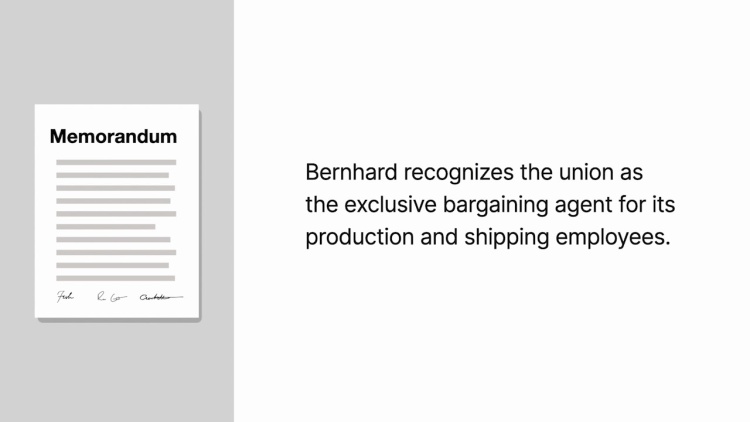International Ladies’ Garment Workers’ Union v. National Labor Relations Board (Bernhard-Altmann Texas Corp.)
United States Supreme Court
366 U.S. 731 (1961)
- Written by Rose VanHofwegen, JD
Facts
The International Ladies’ Garment Workers union (codefendant) campaigned to organize workers at a Bernhard-Altmann Texas Corp. (codefendant) manufacturing plant. The union representative claimed the union had signed authorization cards from a majority of the workers in the plant’s production and shipping department. However, the union did not actually have authorization cards from a majority of those employees, and neither the union nor the company verified the numbers. Instead, the company recognized the union as the exclusive bargaining agent for those employees. By the time the parties entered a formal collective-bargaining agreement six weeks later, the union had obtained more signatures and represented a majority. The General Counsel for the National Labor Relations Board (NLRB) (plaintiff) nonetheless filed complaints against the union and the employer, objecting to the union continuing to represent the employees. The NLRB found the initial representation agreement violated the National Labor Relations Act despite both parties believing in good faith that the union represented a majority and ordered a representation election. The appellate court affirmed, finding the parties’ good faith and the union’s subsequently obtaining a majority irrelevant to whether a violation of the employees’ rights occurred. The Supreme Court granted review.
Rule of Law
Issue
Holding and Reasoning (Clark, J.)
What to do next…
Here's why 899,000 law students have relied on our case briefs:
- Written by law professors and practitioners, not other law students. 47,000 briefs, keyed to 994 casebooks. Top-notch customer support.
- The right amount of information, includes the facts, issues, rule of law, holding and reasoning, and any concurrences and dissents.
- Access in your classes, works on your mobile and tablet. Massive library of related video lessons and high quality multiple-choice questions.
- Easy to use, uniform format for every case brief. Written in plain English, not in legalese. Our briefs summarize and simplify; they don’t just repeat the court’s language.





